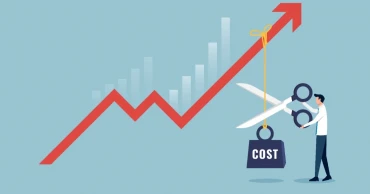government expenditure
Austerity the new buzzword as govt lowers expenditure estimates
The government of Bangladesh has been compelled to pull down its projections for expenditure in the coming couple of years – in light of the changed economic reality brought about mainly by the Russia-Ukraine war and its aftermath of sanctions and counter-sanctions.
In its projections for the 2021-22 budget, the government had projected its total expenditure at 17 percent of GDP for the next two fiscals, i.e. 2022-23 and 2023-24.
However, in preparing the budget for 2022-23, the government has estimated expenditure at 15.2 percent of GDP for the 2022-23 fiscal, while it will be 15.5 percent for the 2023-24 fiscal.
By 2024-25, as per a budget document, the target for expenditure has been set at 15.6 percent of GDP.
Read more: Austerity is on but people will get electricity: PM
The government in the last fiscal, 2021-22, had set the expenditure target at 17.5 percent, but it was revised to 14.9 percent.
This is part of the government’s austerity drive in terms of expenditure, given all the forecasts that the world is heading towards an economic recession in 2023.
According to the document, government expenditure was 13 percent of GDP in 2020-21 fiscal.
As per the document, with successful implementation of reforms in Public Financial Management, government expenditure kept increasing since the 2015-16 fiscal.
Read more: PM reiterates call to practice austerity in all spheres of life
It also mentioned that the Annual Development Programme (ADP) was 4.5 percent of the GDP in the 2020-21 fiscal.
In the current fiscal, the government plans to allocate 5.5 percent of the GDP for the ADP while it is 6.3 percent for 2022-23 and 6.4 percent for 2024-25.
The document is revealing in how large the Russia-Ukraine conflict looms in the government’s calculations, and the challenges posed in its wake.
The “unprecedented” price hike in the international energy market, food supplies and other essential commodities alongside the widespread disruption in international supply chains have adversely affected the global economy, including Bangladesh.
Read More: Govt focuses on less current expenditure and increased capital spending: official document
The conflict is likely to emerge as a new obstacle in the way of achieving development targets, as well as full recovery from the COVID-19 crisis.
The prices of essential import commodities for Bangladesh like oil, gas, fertiliser, edible oil, etc. have skyrocketed in the international market.
According to Finance Division estimate, only nine essential commodities (crude and refined oil, LNG, wheat, fertiliser, palm oil, coal, soybean oil, maize and rice) imported to Bangladesh will cost an additional USD 8.2 billion in 2022, considering the rise in their prices over that in 2021.
The other key import items like consumer goods, capital machineries and industrial raw materials have also seen significant price escalations in the international market. In addition, the costs of international logistics are on the rise. Import-induced inflation, therefore, is gradually emerging as a major concern for Bangladesh Government.
Read More: Govt spending on public servants is to rise next fiscal
3 years ago
Govt targets 17% expenditure of GDP for next two fiscals: Document
The government has projected its expenditure to remain at 17 per cent of the GDP in the next two fiscal years defying the adverse impact of coronavirus, although the pandemic pulled down the rate slightly. In the current 2021-22 fiscal, the government expenditure has been set at 17.3 per cent of the GDP while it was 17.4 per cent of the GDP in the revised budget of the 2020-21 fiscal, according to an official obtained by UNB. According to the official budgetary document, government expenditure was 13.9 per cent of GDP in 2015-16 fiscal and declined to 13.6 per cent in 2016-17 fiscal.
Read: Rebased GDP now official in national accounting In the 2017-18 fiscal, the rate increased to 14.3 per cent of the GDP whereas the rate shot to 15.4 per cent in the 2018-19 fiscal. But in the 2019-20 fiscal it slightly went down to 14.9 per cent of the GDP. As per the document, with successful implementation of reforms in Public Financial Management, government expenditure has been increased since 2015-16 fiscal. "In the medium term (2023-24), the government intends to pursue a moderate consolidation path to keep budget deficit within a sustainable limit," the document said. It mentioned that due to the outbreak of coronavirus, the government has changed its spending priority to expand healthcare and provide stimulus programmes to achieve desired economic recovery. On the other hand, as per the document, the growth rate of nominal government expenditure fluctuated between 6 and 21 per cent over the 2015-16 fiscal to 2019-20 fiscal.
4 years ago

.jpg)
